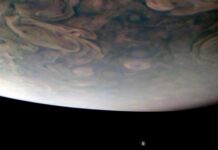NASA and Boeing: Starliner to Return Uncrewed to Earth
In a recent development, NASA has announced that Boeing’s Starliner spacecraft will return to Earth without astronauts Butch Wilmore and Suni Williams on board. The decision underscores NASA’s commitment to safety while continuing to gather crucial data on Starliner’s performance during its upcoming journey back to Earth.
The Context and Current Situation
Butch Wilmore and Suni Williams, who traveled to the International Space Station (ISS) aboard NASA’s Boeing Crew Flight Test in June, have been diligently working on various tasks including supporting ongoing research, station maintenance, and performing system testing and data analysis for the Starliner spacecraft. Their stay on the ISS will now extend as part of the Expedition 71/72 crew until February 2025. They will return to Earth aboard a Dragon spacecraft, as part of the SpaceX Crew-9 mission, alongside two other crew members.
Ensuring Safety: The Core Value
NASA Administrator Bill Nelson emphasized the inherent risks associated with spaceflight, especially test flights, which are neither safe nor routine by nature. "The decision to keep Butch and Suni aboard the International Space Station and bring Boeing’s Starliner home uncrewed is the result of our commitment to safety: our core value and our North Star," Nelson stated. This cautious approach aims to mitigate unnecessary risk for the crew while still allowing NASA and Boeing to collect valuable data from the uncrewed return flight.
Technical Challenges and Response
During the Starliner’s approach to the ISS on June 6, NASA and Boeing identified helium leaks and issues with the spacecraft’s reaction control thrusters. Engineering teams from both organizations have since completed extensive work, including data review, flight and ground testing, and independent reviews with agency propulsion experts. Despite these efforts, the uncertainty and lack of expert concurrence with the spacecraft’s performance led NASA to decide against a crewed return for this flight.
Ken Bowersox, associate administrator for NASA’s Space Operations Mission Directorate, acknowledged the difficulty of such decisions but praised the thorough analysis and transparent discussions by the NASA and Boeing teams. He noted that the uncrewed return would provide further data to enhance the spacecraft for future missions.
Starliner’s Autonomous Capabilities
Starliner is designed to operate autonomously and has previously completed two uncrewed flights successfully. Over the coming weeks, NASA and Boeing will adjust end-of-mission planning and Starliner’s systems to prepare for its uncrewed return. This return must occur before the launch of the Crew-9 mission to ensure a docking port is available on the ISS.
Steve Stich, manager of NASA’s Commercial Crew Program, expressed confidence in Starliner’s capabilities but highlighted the need for a higher level of certainty for a crewed return. He emphasized that the ongoing flight test is providing critical information that will aid in preparing for the uncrewed return and benefit future corrective actions for the spacecraft.
The Road Ahead
NASA’s Commercial Crew Program mandates that spacecraft undergo a crewed test flight to validate their readiness for regular missions to and from the ISS. Following Starliner’s return, NASA will review all mission-related data to determine any additional steps needed to meet certification requirements.
The SpaceX Crew-9 mission, which will now include Wilmore and Williams, is scheduled for launch no earlier than September 24. NASA and SpaceX are reconfiguring seats on the Crew-9 Dragon and adjusting the manifest to accommodate additional cargo, personal effects, and Dragon-specific spacesuits for the astronauts. The mission will launch from Space Launch Complex-40 at Cape Canaveral Space Force Station in Florida, providing increased operational flexibility around NASA’s planned Europa Clipper launch.
Enhancing Operational Flexibility
The Crew-9 mission marks the ninth rotational mission to the ISS under NASA’s Commercial Crew Program. This program collaborates with the American aerospace industry to achieve the goal of safe, reliable, and cost-effective transportation to and from the ISS using American-made rockets and spacecraft launched from American soil.
The ISS: A Crucial Testbed
For over two decades, the ISS has been a vital hub for scientific research and technological advancements, enabling breakthroughs that are not possible on Earth. It serves as a critical testbed for NASA to understand and overcome the challenges of long-duration spaceflight and expand commercial opportunities in low Earth orbit. As commercial companies focus on providing human space transportation services and destinations as part of a robust low Earth orbit economy, NASA’s Artemis campaign is preparing for future human exploration of Mars.
Conclusion and Future Prospects
The decision to return Starliner uncrewed reflects NASA’s unwavering commitment to safety and meticulous approach to space exploration. The data gathered from this uncrewed return will play a significant role in refining the spacecraft and ensuring the success of future missions. As NASA continues to collaborate with commercial partners like Boeing and SpaceX, the advancements in space technology and human spaceflight will drive forward our understanding of space and pave the way for future explorations, including missions to the Moon and Mars.
For more detailed information on NASA’s Commercial Crew Program, you can visit: https://www.nasa.gov/commercialcrew.
Inquiries about this news can be directed to:
Meira Bernstein / Josh Finch
- Headquarters, Washington
- 202-358-1100
- meira.b.bernstein@nasa.gov
- joshua.a.finch@nasa.gov
Steve Siceloff / Danielle Sempsrott / Stephanie Plucinsky
- Kennedy Space Center, Florida
- 321-867-2468
- steven.p.siceloff@nasa.gov
- danielle.c.sempsrott@nasa.gov
- stephanie.n.plucinsky@nasa.gov
Leah Cheshier / Sandra Jones
- Johnson Space Center, Houston
- 281-483-5111
- leah.d.cheshier@nasa.gov
- sandra.p.jones@nasa.gov
Stay tuned for more updates as NASA continues its journey of exploration and innovation in space.
—
This comprehensive overview aims to keep readers informed about NASA’s latest decisions and the ongoing developments in its collaborative efforts with Boeing and SpaceX. The focus remains on ensuring safety while advancing our capabilities in space exploration.
For more Information, Refer to this article.



































